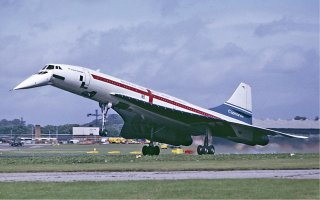These Are the Three Fastest Planes That Have Ever Flown
Interestingly, almost none of them are still in flight today.
Know This: these three planes represent some of the fastest birds to have ever flown.
MiG-25
One of the early jet fighters that can be counted among the fastest jets ever designed was the MiG-25. The Soviet Mikoyan-Gurevich airframe made extensive use of stainless steel, as a typical aluminum airframe would not have been able to cope with the stresses at the high speeds the MiG-25 was intended for. The airframe’s more robust steel construction came at a cost, however. The MiG-25 was a beast of a plane and tipped the scales at about 64,000 pounds—without fuel or a full weapons loadout—adversely affecting flight performance.
The heavy airplane was intended to be the Soviet Union’s premier interceptor, and although it could achieve Mach 2.8 speeds, Soviet pilots were advised to not fly over Mach 2.5 in order to extend engine life. Still, one Mig-25 was tracked at Mach 3.2 over the Sinai Peninsula. The record flight came at a cost, however. After the flight, the airframe’s engines had to be written off.
Today, the MiG-31 is the successor to the MiG-25, and features similar, but improved design elements, including a two-man cockpit and around double the range of the gas-guzzling MiG-25. It is one of the fastest military aircraft currently in service today.
Concorde
On the commercial side of flight, the jointly Franco-British designed Concorde is the fastest commercial successful airliner ever. The iconic modified delta wing design could achieve sprints in excess of Mach 2, and set the record for fastest flight from London to New York in just over 2 hours and 52 minutes.
Fast thought the design was, it was severely hindered by its incredibly loud sonic boom. When flying over more densely populated areas, the Concorde has was forced to fly at subsonic speeds, increasing flight time for an aircraft designed to be the fastest commercial airliner ever, and ultimately contributing to the retiring of the airframe in the mid-2000s.
Blackbird Singing
The one bird that takes the cake set a number of speed records throughout its legendary career—the SR-71 Blackbird.
In the aftermath of Gary Powers U-2 spy plane incident (Powers was shot down by a Russian surface-to-air missile battery while overflying the Soviet Union. At the time, the belief was that the U-2 flew too high to be targeted by Russian SAMs), Lockheed’s Skunkworks designed an airframe that was unstoppable.
A number of exotic materials went into the design, including extensive use of lightweight and high-strength titanium, as well as a specially-formulated iron ferrite paint coating that was somewhat radar absorbent.
Rather than flying above or beyond Soviet SAM range, the SR-71 Blackbird could comfortably fly within airspace covered by anti-air batteries. If it detected a SAM launch, the Blackbird pilot would simply hit the thrust lever—outflying SAM missiles at speeds in excess of Mach 3, or three times the speed of sound.
In 1976, the official Blackbird record was set at an altitude of 85,000 feet. On that fateful day, The SR-71 flew at a mind-numbingly fast Mach 3.3, easily outflying anything in existence. Though unofficial, another Blackbird pilot claimed to have blown past the 1976 record while on a bombing run over Libya. During that flight, the pilot claimed to have achieved a top speed of Mach 3.6.
Caleb Larson is a defense writer with the National Interest. He holds a Master of Public Policy and covers U.S. and Russian security, European defense issues, and German politics and culture.
This piece first appeared last year and is being republished due to reader interest.


